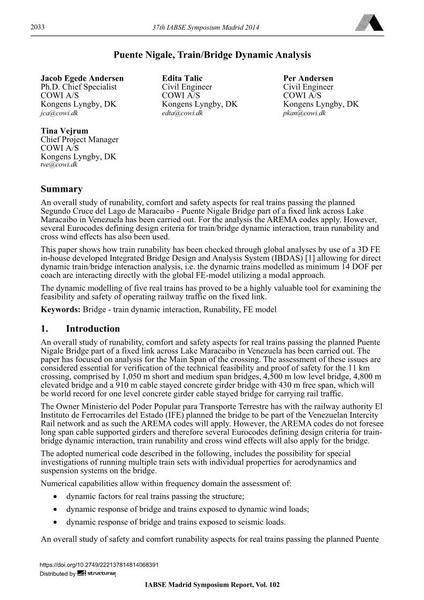Puente Nigale, Train/Bridge Dynamic Analysis

|
|
|||||||||||
Bibliographic Details
| Author(s): |
Jacob Egede Andersen
Edita Talic Per Andersen Tina Vejrum |
||||
|---|---|---|---|---|---|
| Medium: | conference paper | ||||
| Language(s): | English | ||||
| Conference: | IABSE Symposium: Engineering for Progress, Nature and People, Madrid, Spain, 3-5 September 2014 | ||||
| Published in: | IABSE Symposium Madrid 2014 | ||||
|
|||||
| Page(s): | 2033-2040 | ||||
| Total no. of pages: | 8 | ||||
| Year: | 2014 | ||||
| DOI: | 10.2749/222137814814068391 | ||||
| Abstract: |
An overall study of runability, comfort and safety aspects for real trains passing the planned Segundo Cruce del Lago de Maracaibo - Puente Nigale Bridge part of a fixed link across Lake Maracaibo in Venezuela has been carried out. For the analysis the AREMA codes apply. However, several Eurocodes defining design criteria for train/bridge dynamic interaction, train runability and cross wind effects has also been used. This paper shows how train runability has been checked through global analyses by use of a 3D FE in-house developed Integrated Bridge Design and Analysis System (IBDAS) [1] allowing for direct dynamic train/bridge interaction analysis, i.e. the dynamic trains modelled as minimum 14 DOF per coach are interacting directly with the global FE-model utilizing a modal approach. The dynamic modelling of five real trains has proved to be a highly valuable tool for examining the feasibility and safety of operating railway traffic on the fixed link. |
||||
| Keywords: |
FE model runability bridge-train dynamic interaction
|
||||
